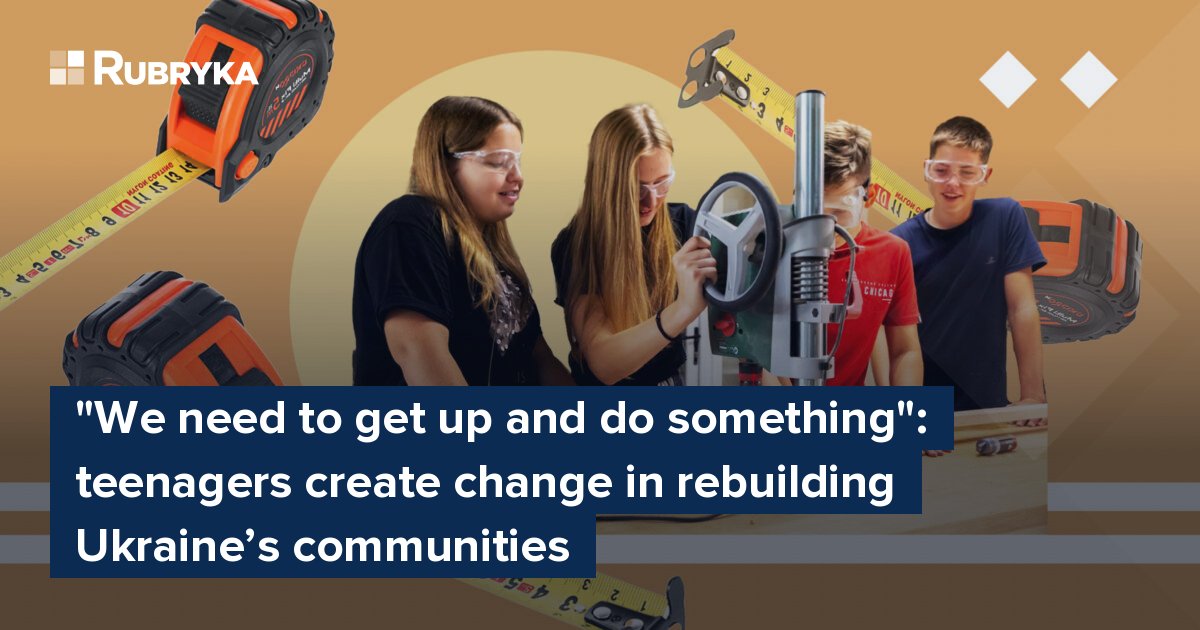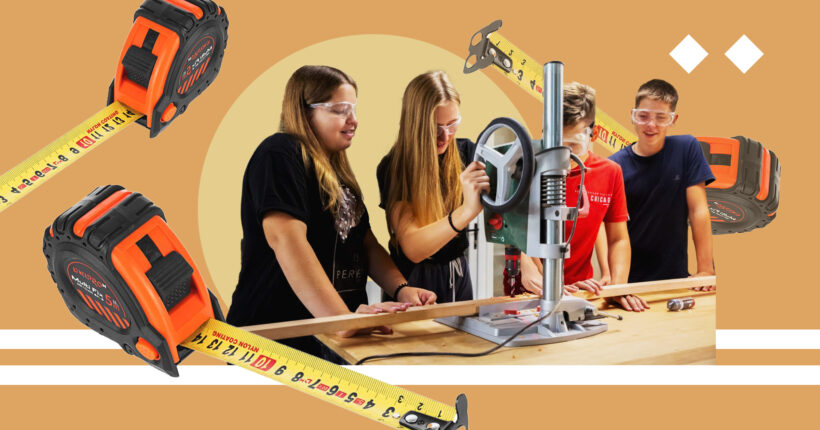
What is the problem?
Ukraine's communities are anxiously waiting for post-war reconstruction, but waiting for war to end to get started is not good enough. Many things can already be improved today, and Ukrainian youth understand this very well.
What is the solution?
A survey conducted on behalf of the International Republican Institute within the framework of the USAID Dream and Act program found that 79% of respondents would like to stay in Ukraine and participate in the reconstruction process.
Ukrainian teenagers can, know how and want to be creative and work for Ukraine to recover and change for the better.
Change starts with an action plan – and that's the name of the educational program for students of grades 8-11 who want to participate in the reconstruction of Ukraine.
Plan.DIY is a bilingual play on words, mixing DIY (do it yourself) — and "diy," which means "act" in Ukrainian. The project is a call to act in response to local problems here and now, with a clear view of the future. The program's purpose is to satisfy the desire of teenagers and young people to be involved in the country's reconstruction, and equip them with all the necessary knowledge and skills.
How does it work?
"Our vision is a generation of Ukrainians who are optimistic about solutions and confident in their ability to find them"
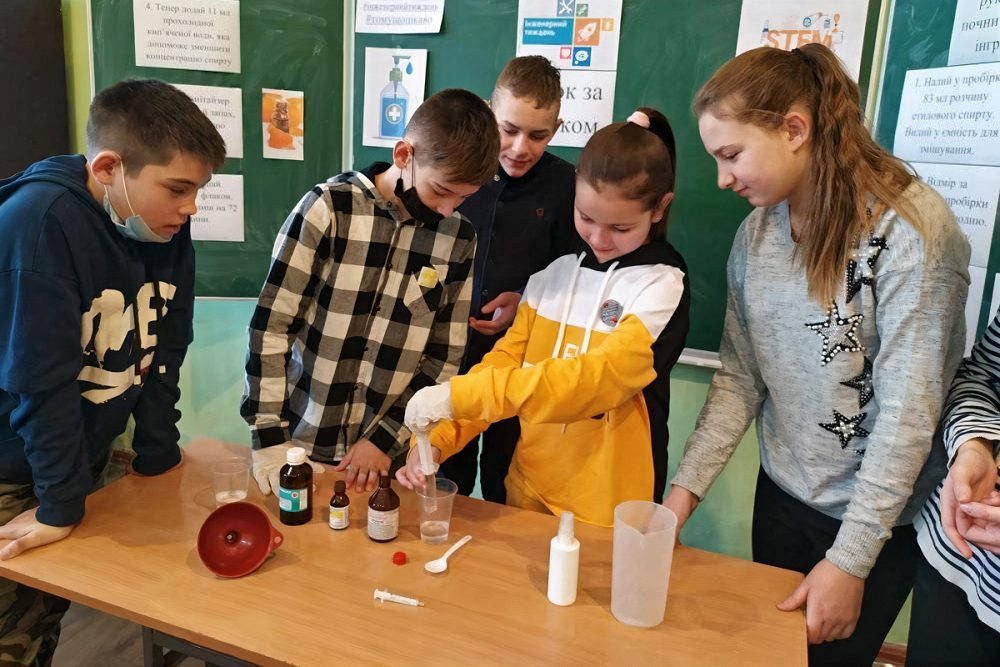
Before the war. Engineering week at Bakhmut Secondary School No. 7.
The educational program Plan.DIY, based on the principles of design thinking and engineering design process, is implemented in Ukraine by the non-governmental organization Pro.Pro.Lab. For several years the NGO has been popularizing engineering thinking among Ukrainian schoolchildren as a tool for everyone to make the possible real today and in the future.
Before the war, the organization's main project was the annual Engineering Week, designed to turn the school into a maker hub and scientific laboratory to letstudents try their hand at engineering and invention. In 2020 to 2021, Pro.Pro.Lab STEM (science, technology, engineering, and mathematics) weeks were held in more than 2,000 schools, reaching 278,280 students and 8,383 teachers.
Awareness of the challenges that appeared in Ukraine during the full-scale invasion by Russia made the organization team understand that Engineering Weeks should go beyond the boundaries of schools: "Everything we taught in the classrooms, it's time to put it into practice," the organization team told Rubryka. This is how the idea of Plan.DIY was started, and grew into a platform for implementing the ideas of students with bold solutions for developing their local communities.
How were the projects chosen for the program?
According to Olena Shulga, the educational program manager for Plan.DIY and the head of the NGO Pro.Pro.Lab, the main attention was paid to the students' projects in small towns and villages, because it is easier for teenagers to make changes locally, and see the results immediately. "Children know community leaders and community leaders know children," Shulga says. "It is easier for them to engage in dialogue. It is also easier to arrange local business support. Secondly, it is for young people to have a desire to stay in the community. In my opinion, such a desire can arise if a girl or a boy knows that they can influence the place they live in, change it. In any other case, they will look for a place where everything has already been created," Shulga explains.
In total, this year, the Plan.DIY program received 104 applications, of which five were selected:
- Setting up convenient navigation in the village of Kulykivka (Chernihiv region);
- Furnishing a school shelter in Voznesensk (Mykolaiv region);
- Collection, purification, and conservation of rainwater in the city of Pokrov (Dnipropetrovsk region);
- Creation of an urban garden in the city of Rudky (Lviv region);
- Restoration of public space in Marhanets (Dnipropetrovsk region).
"Since Plan.DIY is primarily an educational program, it was important for us that solving the problem involved its exact identification, research, search for possible solutions, selection of the best, prototyping, and implementation."
"For example, between applications to build a ramp to a school shelter or to try to solve the water shortage problem, we preferred the second because the first one needs financing, not the development of a solution," says the educational program manager.
Another component of the program is a crowdfunding campaign by each of the teams.
"During the interview with the finalists, we assessed the probability of attracting the funds necessary to implement their ideas in this way. Unfortunately for some teams, this path was not optimal, as they needed more funding," Shulga shared with Rubryka. "Although looking ahead, I will say that several teams, starting from a smaller one, have developed quite large-scale solutions. We are currently working with these teams to raise additional funds."
The projects were also chosen according to such an important principle: whether the future work of the teams will be helpful in other schools and communities — to scale the solutions and give the communities as many tools as possible for solving problems independently.
Schools have become a special place of strength, a space where students implement their creative and bold ideas for the development of their native community. The project's initiators are sure that such career guidance is right on time – because every acquired skill is transformative.
Success comes to those who dream, plan, and act
The training program has four main stages:
1. Researching problems and generating solutions.
The first stage took place mainly online, accompanied by professional experts. According to Shulga, they tried to select the best specialists for this stage — to inspire the teams to believe in their abilities and do more than they might have expected from themselves at the beginning.
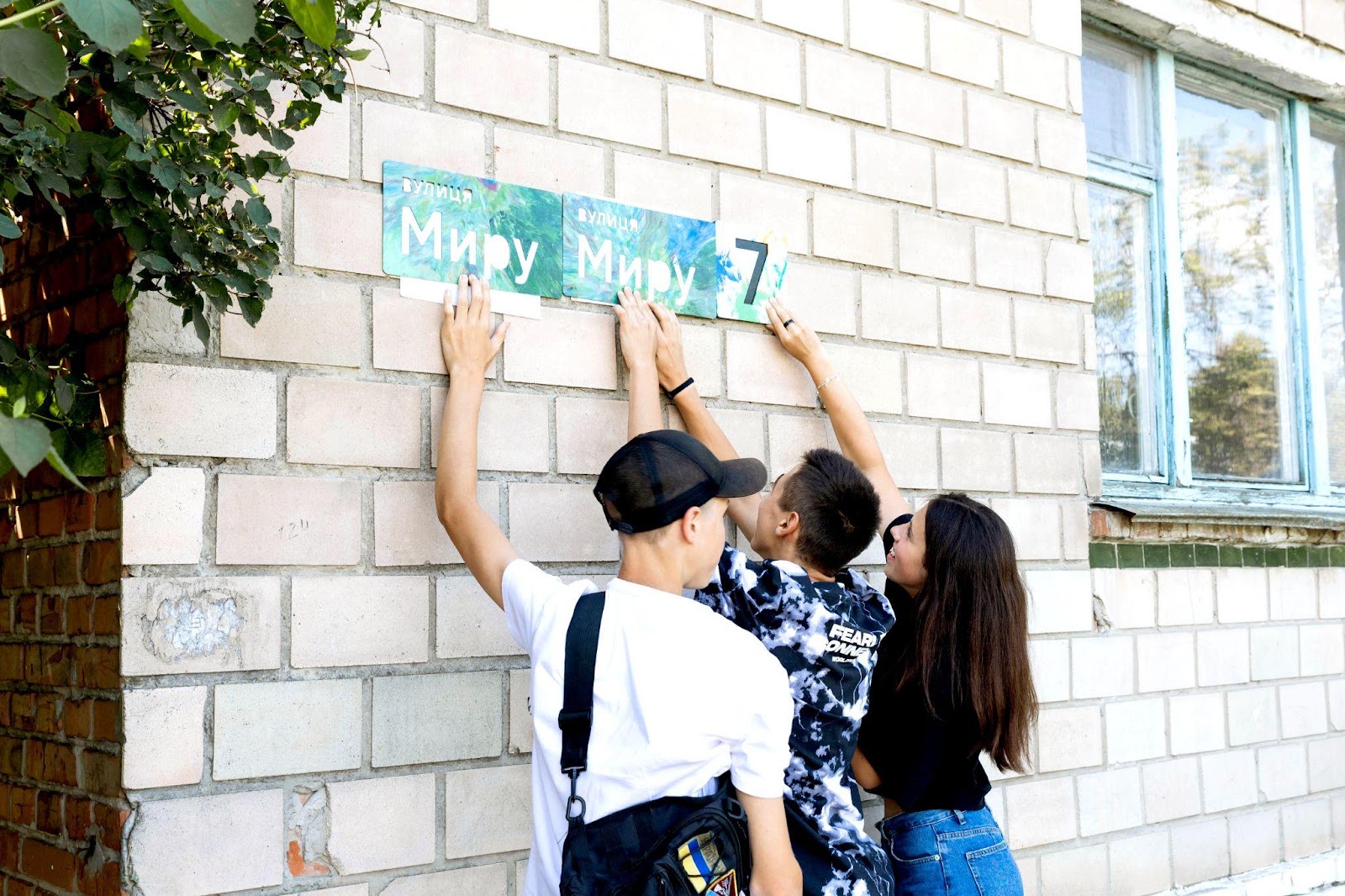
A team of teenagers from Kulykivka restores navigation signs reading "Peace Street" in their village.
The Kulykivka team from the Chernihiv region is engaged in restoring navigation in their community. In the spring of 2022, residents removed all the street signs to make it difficult for invading Russian soldiers to find their way and advance. Now that the area has been liberated, many displaced people live in the community, so the lack of signs causes inconveniences. Oleksandr Kolodko, designer and co-founder of Agents of Change, who previously developed navigation for Kyiv's metro and public parks, helped the team to create new designs.
2. Prototyping.
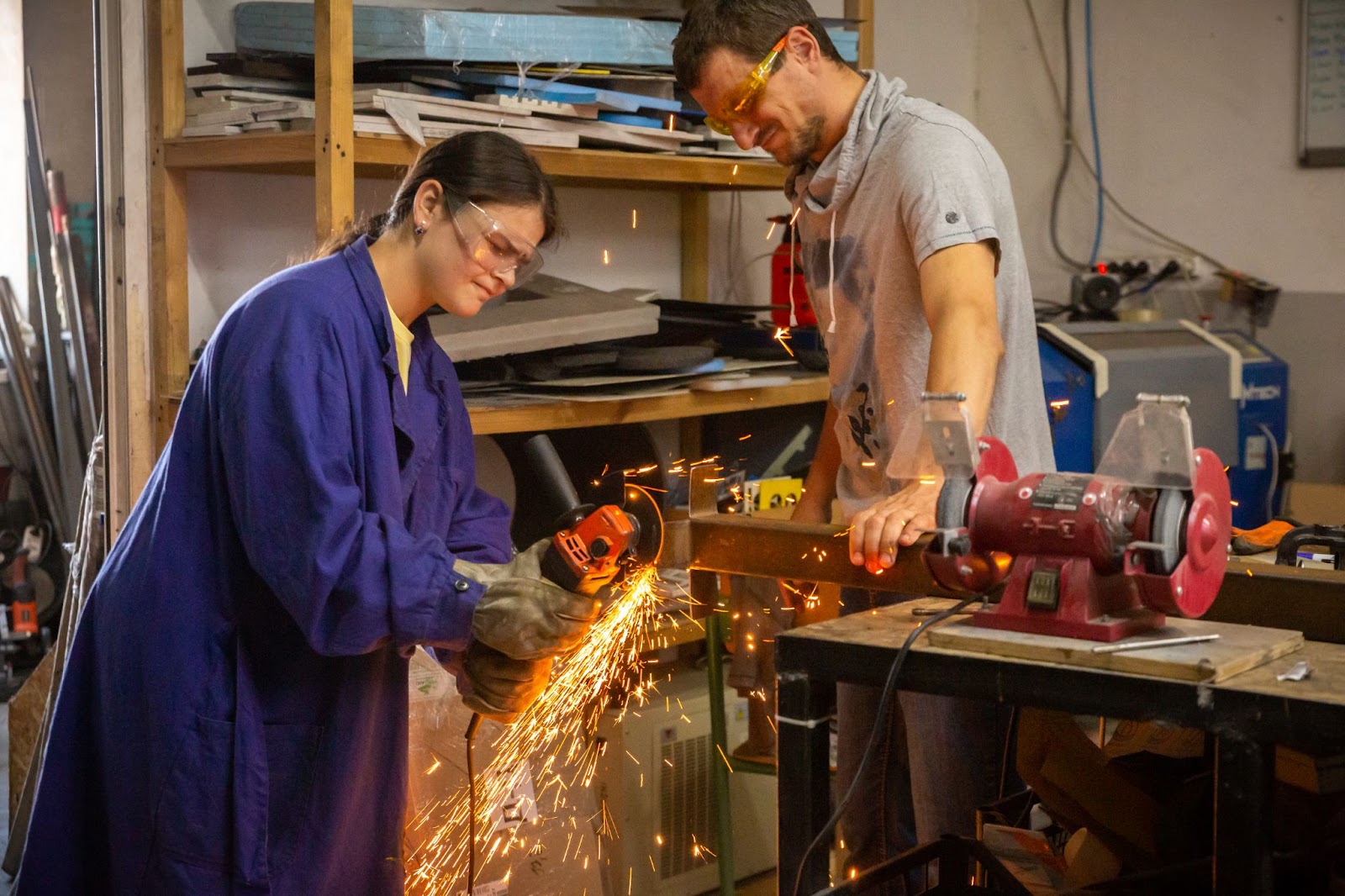
Maria Hrushetska, a member of the team from Pokrov, is working on creating a prototype.
When it looks like a solution has been found, it should be tested. For this, some teams went to workshops. Looking for a solution to the water shortage problem, a team from Pokrov came to Kyiv for three days, and together the makers at HackLab, they assembled a prototype rain catcher.
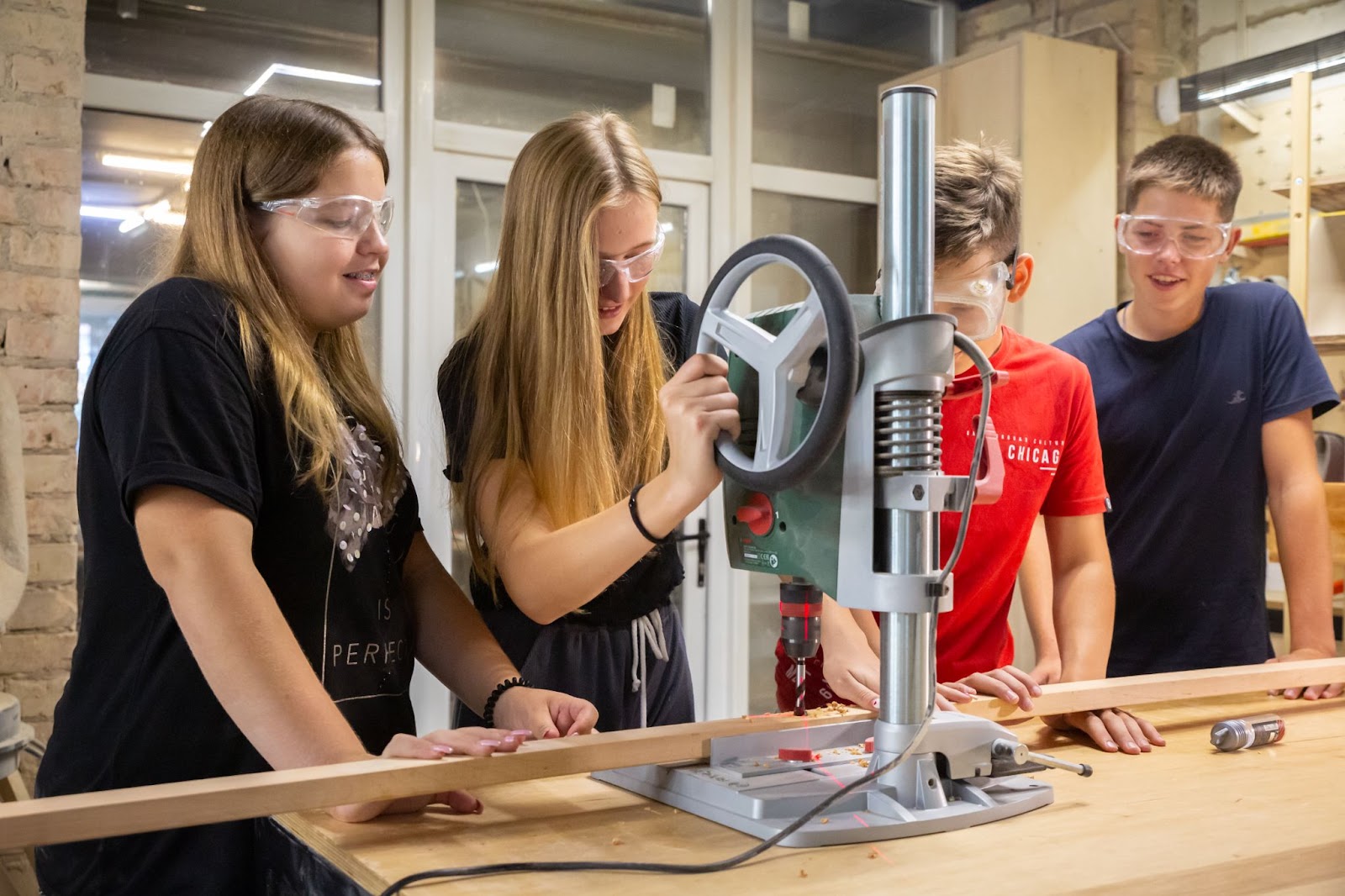
Pupils from Voznesensk came up with a furniture design for their school shelter and already had several samples to update the interior.
The team from Voznesensk, which creates transforming furniture for school shelters, also came to Kyiv to work on the Ostriv Platform. Yurii Granovskyi and Andrii Batin, founders of the Peremebli project, accompanied them for the entire project. After three days of experimenting, the pupils returned home with a brand new shelf for the school shelter. With the support of specialists, the children did 90% of the work themselves and can now teach their peers to make such shelves.
"For many more years, we will be working on arranging shelters. You can wait for someone to do it, or you can do it yourself, as the team from Voznesensk is doing. The enthusiasm with which the children got to work shocked me," said Anton Tribe, manager of the Plan.DIY program, who observed the work of the teenagers. "They were not afraid to pick up a tool and work with it. They joked and were not afraid to make a mistake. They always supported each other, and it was really sincere."
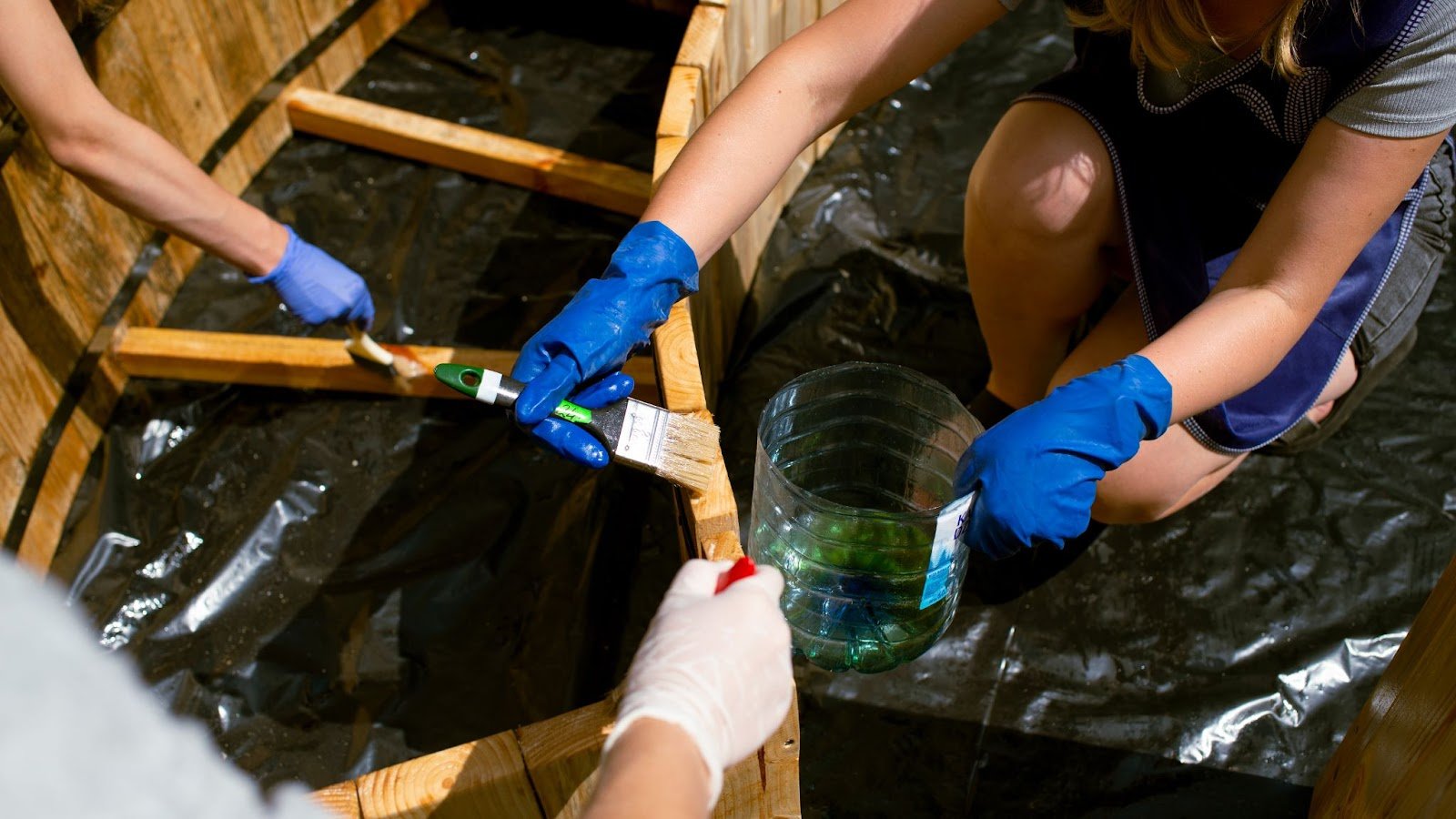
In the city of Rudky, schoolchildren set up an experimental site near the school for growing spices.
The makers came to the team from Rudky in the Lviv region on their own – along entire Tolocar mobile workshop, which takes care of food safety, came to them. In Rudky, schoolchildren create an experimental space for growing spices,herbs and learning in the open air. In the future, they hope to switch to growing all the vegetables and fruits needed for the school's canteen, which is possible on its grounds, which span one hectare. Working with the makers, the team assembled the first few raised beds and a bench prototype.
Prototyping is a critical stage of the program, because it allows you to test hypotheses. After prototyping, it was possible to slightly improve the rain catcher with changes to the design.
For many students, this was their first experience working with tools and building materials. "Not all schools currently have workshops, but as we can see, reconstruction will require both the ability to design and implement solutions. In the short term, what is needed is the ability to quickly fix the broken and destroyed," says Shulga.
3. Attracting funds.
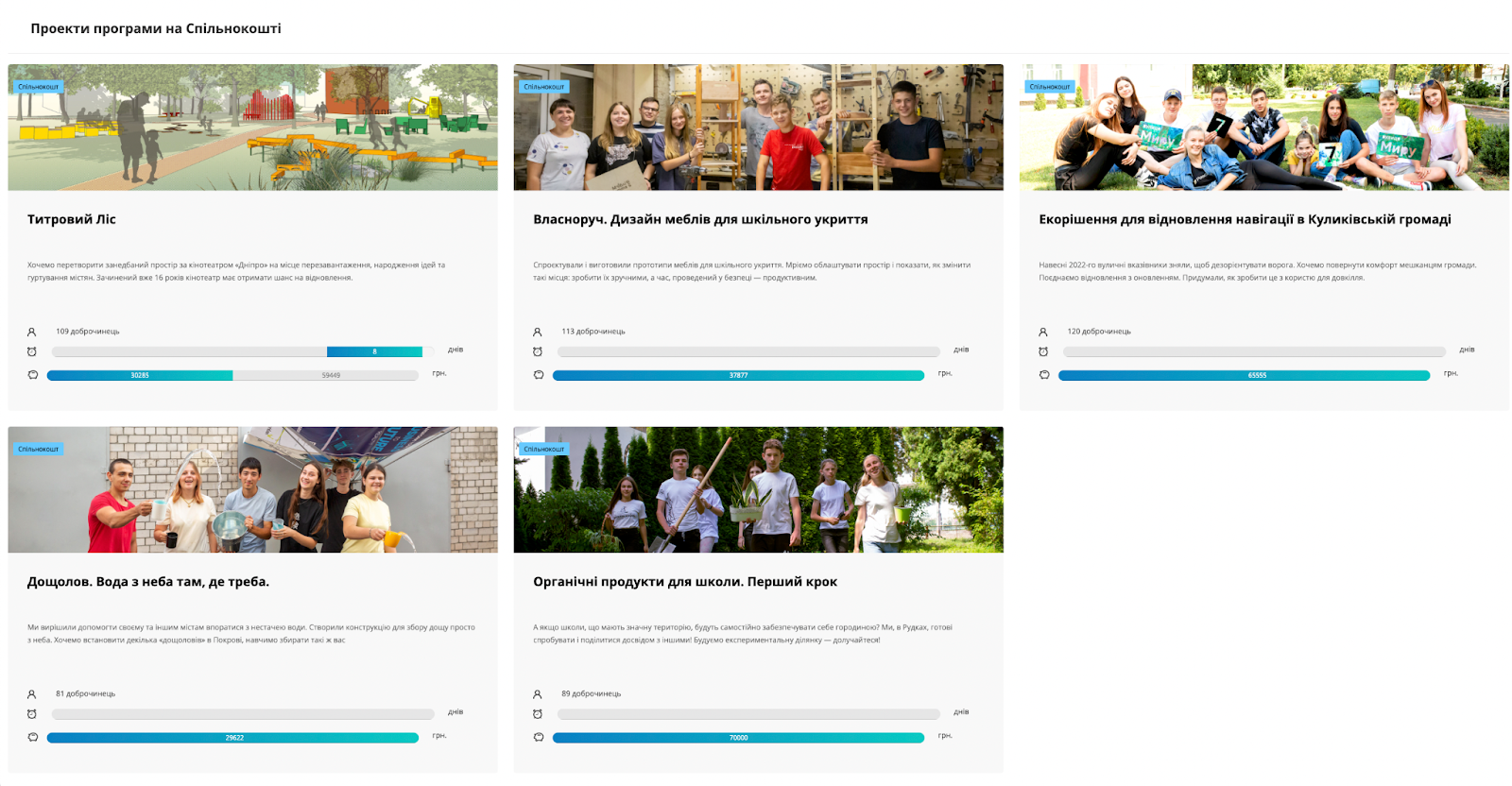
Collection of funds for the projects of the Plan.DIY program.
For piloting the program, the teams chose to conduct crowdfunding campaigns. Each team had 31 days to collect the amount necessary to implement the solution. For some teams, it is about ₴30,000; for others, ₴60-70,000. This stage is the most intense, as the month of fundraising seems to go by very quickly.
At this stage, the teams also learned to speak about their project to journalists, bloggers, the community where they live, representatives of local authorities, and businesses. Of course, Pro.Pro.Lab helped by suggesting who they could try to contact for support and how to disseminate information to graduates and families of those students who are currently abroad.
All teams have already completed their campaigns by collecting 100% and even a little more.
4. Implementation.
In the final stage, the funds the teams collect are used to purchase materials, and sometimes equipment, to implement the idea on the planned scale.
The team from Kulykivka is purchasing a milling machine for the first 50 address signs, and in Rudky, they will complete the arrangement of the experimental site and plant planting. Ten transforming racks and the same number of transforming ottomans will appear in the school shelter of Voznesensk School No. 5. In Pokrov, children will install several rain catchers on the territory of their own and other schools in the city, as well as in public places.
In addition to schoolchildren's motivation, energy, and effort, community leaders must take student ideas seriously in an adult way. Therefore, another stage of the Plan.DIY program is the signing of memorandums of cooperation with local self-government.
Does it really work?
"Teenagers see the city's problems in a completely different way than we adults"
The team in Marhanets set itself the most ambitious goal — to turn the abandoned area behind an inactive Dnipro cinema into a public space.
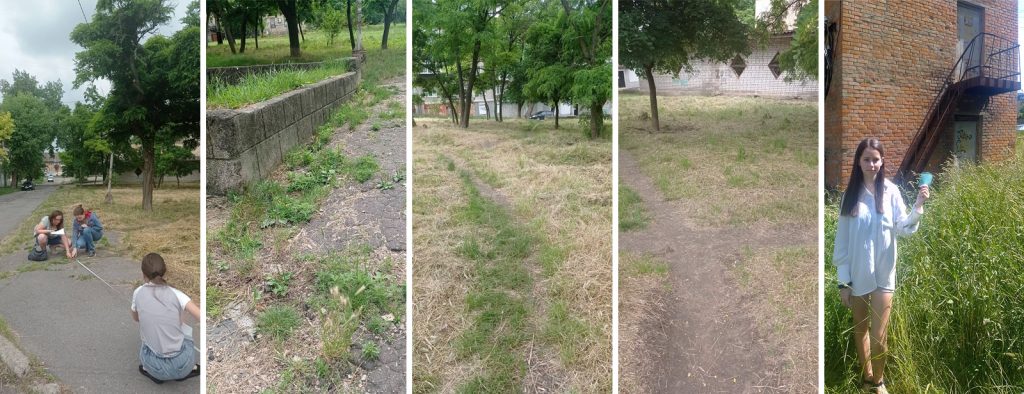
Works on planning the space of the future cinema park.
It all started when Maryna Petrovska saw a post about the Plan.DIY project on the Facebook page of Engineering Week.
"What I liked the most about this program is that it is based on students going through all the project steps independently," says Petrovska, director of Marhanets Lyceum No. 11 of the Marhanets City Council of the Dnipropetrovsk region. "They identify the problem, research it, look for possible solutions, and choose the best one — from the idea to its implementation."
Together with her colleague, Alina Mashko, they began inviting our children to participate in the project, and took their first steps in the program.
Pupils supported the decision to participate in the project. "Teenagers see the city's problems in a completely different way than we adults do. During discussions with them about the subject of the project, my colleague and I were impressed by their opinions, proposed topics, and ways of possible solutions to the problems of our small mining town," continues Petrovska. "In fact, we do not have many places for young people to spend free time and have useful recreation. Therefore, a small area behind a cinema that has been inactive for a long time became the starting point of our project. It seemed to us the place where we could combine rest, watching movies, and the opportunity to communicate."
In addition, all project co-authors believed that this territory could be used by educational institutions located nearby to hold various holidays, festivals, or sports entertainment. This was the decisive moment.
Active work on the project began in May, when the lyceum signed a cooperation agreement with the Marganets City Council, and Pro.Pro.Lab was signed, which coordinates the cooperation of the parties.
First, there was training. The whole summer, despite the vacation, the team received the necessary knowledge and worked on the idea. Coaches from the Insha Osvita NGO became mentors for high school students. URBAN curators became leaders and inspirations for the team (projects developed by them were implemented in Kyiv, Lviv, Lutsk, Zhytomyr, Novomoskovsk, Mariupol, Vinnytsia). Thanks to participating in the Plan.DIY program, Marhanets can join these cities and get a unique location for recreation and holding various events. Despite the wartime, children are already striving for a peaceful, fulfilling life. The students dream: if they succeed in renovating this space, the cinema will eventually become operational, and the whole district will recover to its full potential.
Title Forest
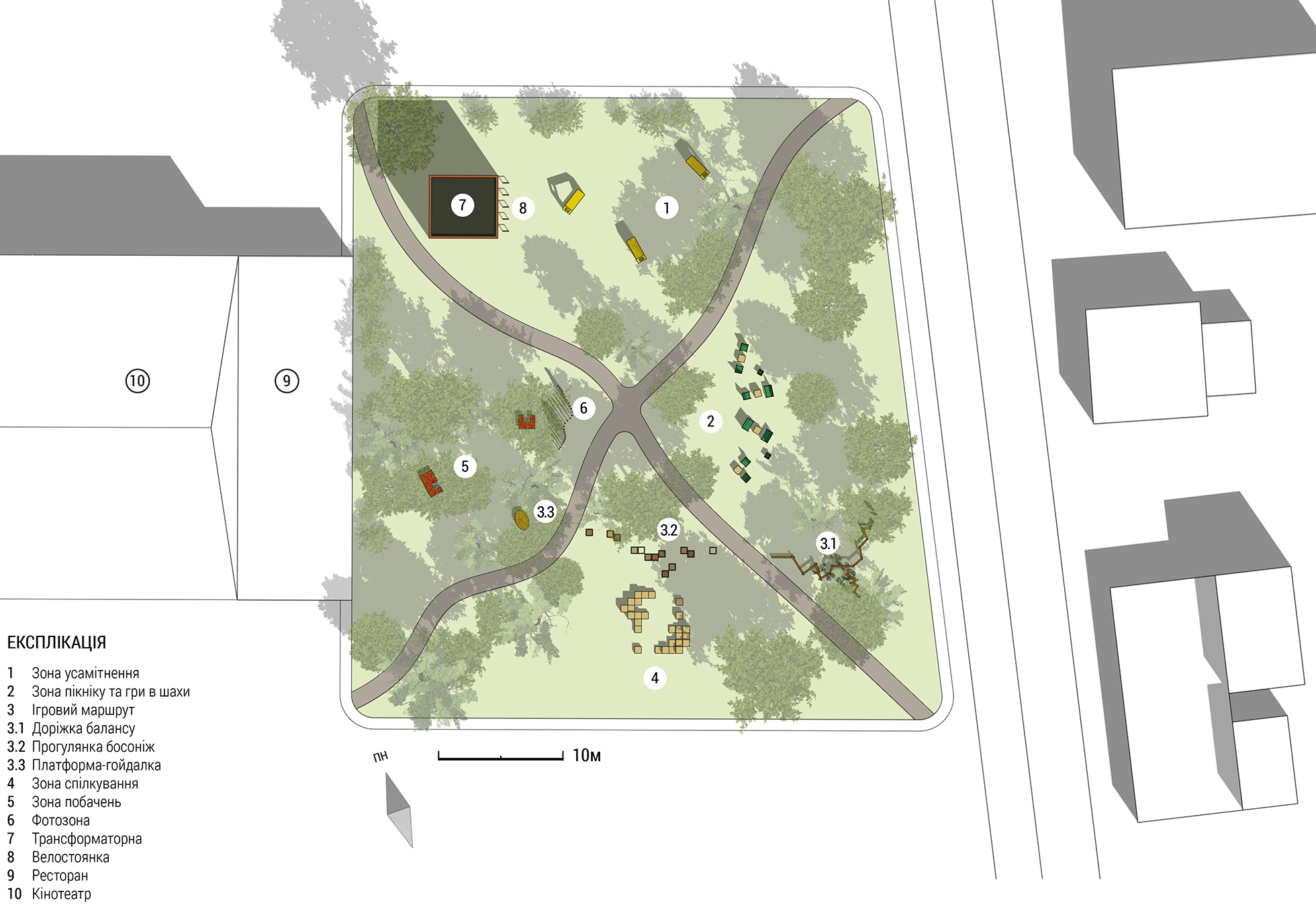
The plan for the future recreation area in Marhanets.
The project of renewingthe cinema square was named "the Title Forest." Here, the idea is to discover Ukrainian and world cinema in several zones:
- the communication area is a place for meetings and holding open lectures and classes. Here, children will have the opportunity to spend time with their classmates and teachers;
- seclusion zone — away from the noise in special houses, you can sit with a book or simply recharge;
- dating zone — a place that will inspire conversations about love;
- family time zone — parents and children will be able to spend time in the fresh air.
Most of the elements of the proposed project could be hand-made using just wood and finishing materials.
For the project to come to life, a part of the necessary amount was crowdfunded — more than ₴60,000. Local authorities were involved in bringing the territory to order, and additional funds will be needed to complete the transformation fully. Now, the NGO Pro.Pro.Lab. together with all project participants, plan how they can be involved.
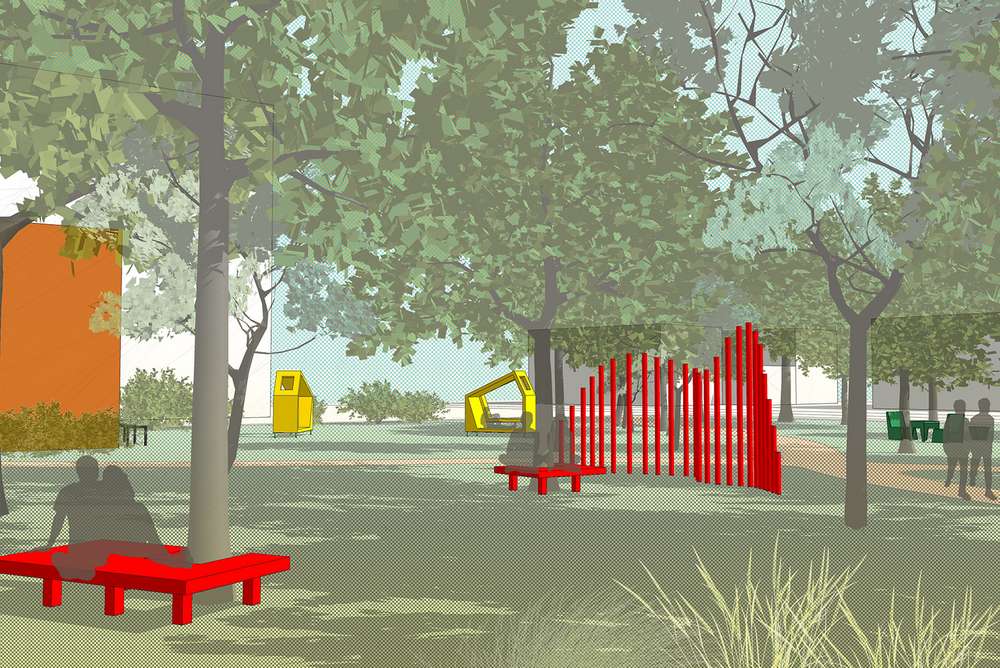
Visualization of the Title Forest project.
Rebuilding people and creating changes here and now
The main thing is that the children do not doubt they will succeed.
Five boys and four girls are united by one desire — to change themselves and the world around them. They openly talk about problems and are ready to look for ways to implement them. Their answers to the question "What does reconstruction mean to you?" were not childish at all.
Eleventh-grader Danylo Vorobyov shared his thoughts: "For me, the concept of rebuilding the country today means understanding the importance of work for the benefit of our society and directing efforts to improve the quality of life of citizens and equal opportunities for all. The future of the country, the future of my hometown, which has a fascinating history, is important to me. It is delightful to realize that in 10 years, this square will please the eyes of everyone who comes there to relax and rest spiritually. I will definitely study and live in Ukraine because this is my motherland!"
His classmate Yechenia Shtefanova adds: "For me, rebuilding the country is not just about creating something new and forgetting the old, thus forgetting a part of history. We want to do something so unusual and new that looking at it, we remember past events and want to go to the future."
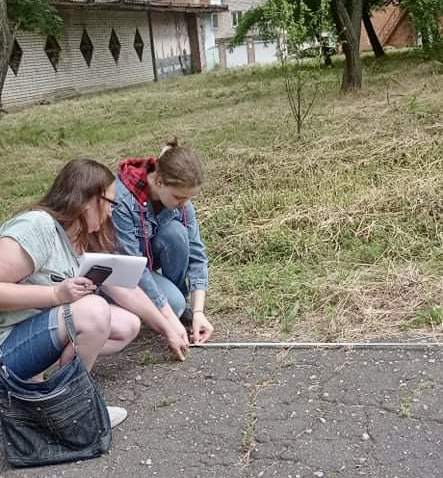
Dasha Barinova and electronics engineer Olena Samofalova measure the space.
Teenagers mention another important aspect — rebuilding people.
"For me, reconstruction is an opportunity to rebuild people, their national consciousness, to allow them to remember who they really are. I cannot speak for everyone, but my motivation to participate in this project is the desire to live better. To live better, you have to get up and do something. The opportunity to improve the life not only of my own but also of my hometown, for me, inspires and gives hope," says Dasha Barinova.
Another young creator of changes in the community, Oleksandr Lysytsia, summarizes: "By joining the program, our entire team wanted to influence the community's life and make the citizens, and us too, a breath of fresh air for all these years. This project proves that if you have a desire and make an effort, you can do anything, even as a teenager. I am sure that our project will develop only upwards!"
Scalable solutions
The initiators of the Plan.DIY program are confident that these first five school projects will inspire other Ukrainian cities to join the country's reconstruction. With examples and supporting materials, everyone will be able to walk this path more confidently.
The pilot program lived up to, and in some cases even exceeded, the expectations of its founders. First of all, the quality of the team's solutions, and sometimes their scale, such as in Marhanets, when a whole wasteland in the city center is awaiting transformation. In several communities, the initiated changes will gain traction. The Kulykivska community plans to combine care for the environment with permanently updating navigation and involving neighboring communities.
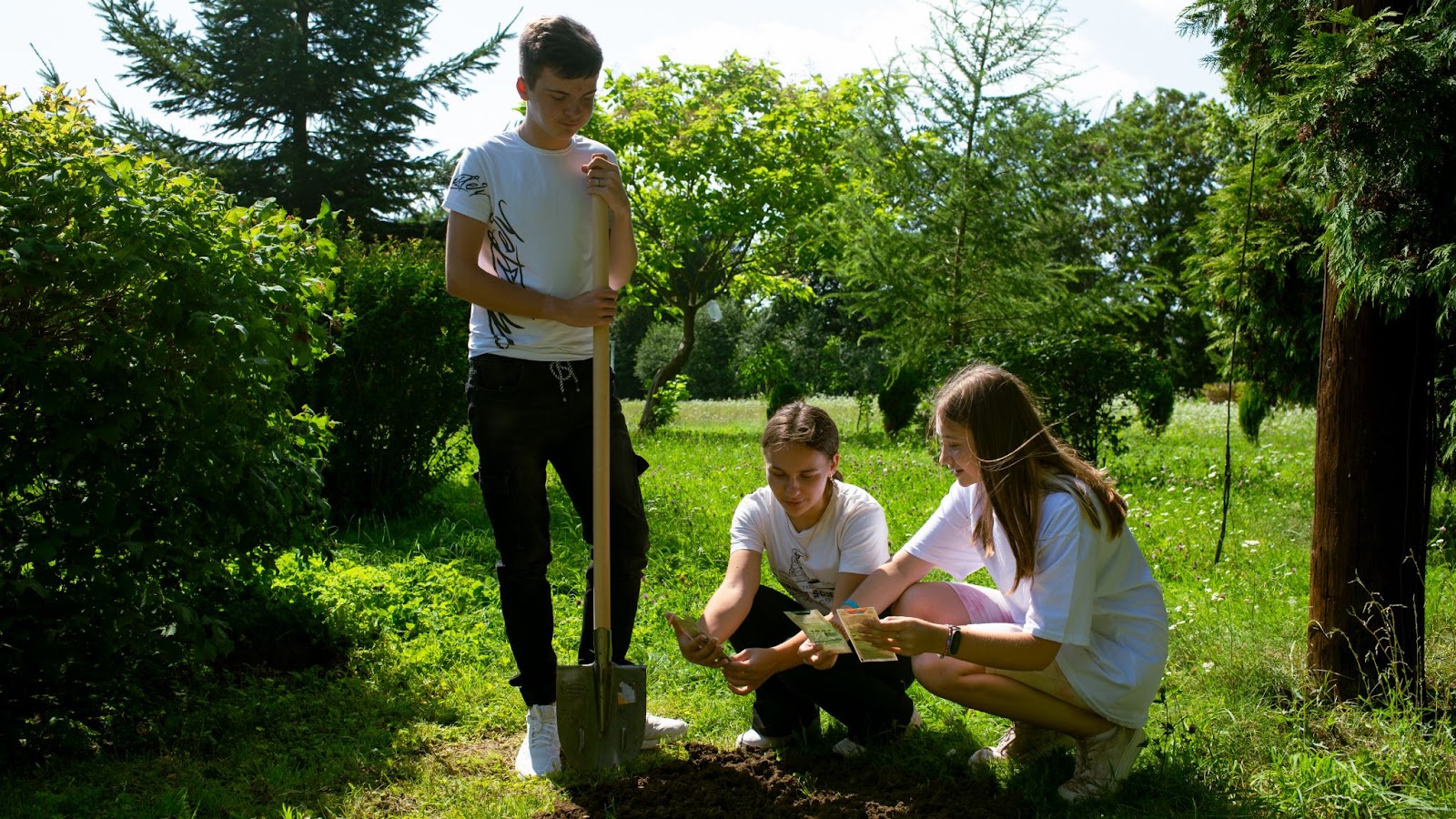
Work on the greenhouse in Rudky.
The solution developed by the team in Rudky is easy to implement in other schools with at least a small grounds.
It is just as easy to adopt the experience of the Voznesensk team — it is all the more relevant because almost all schools currently working take care of arranging shelters, and children can assemble such furniture themselves, adding comfort and coziness to the space.
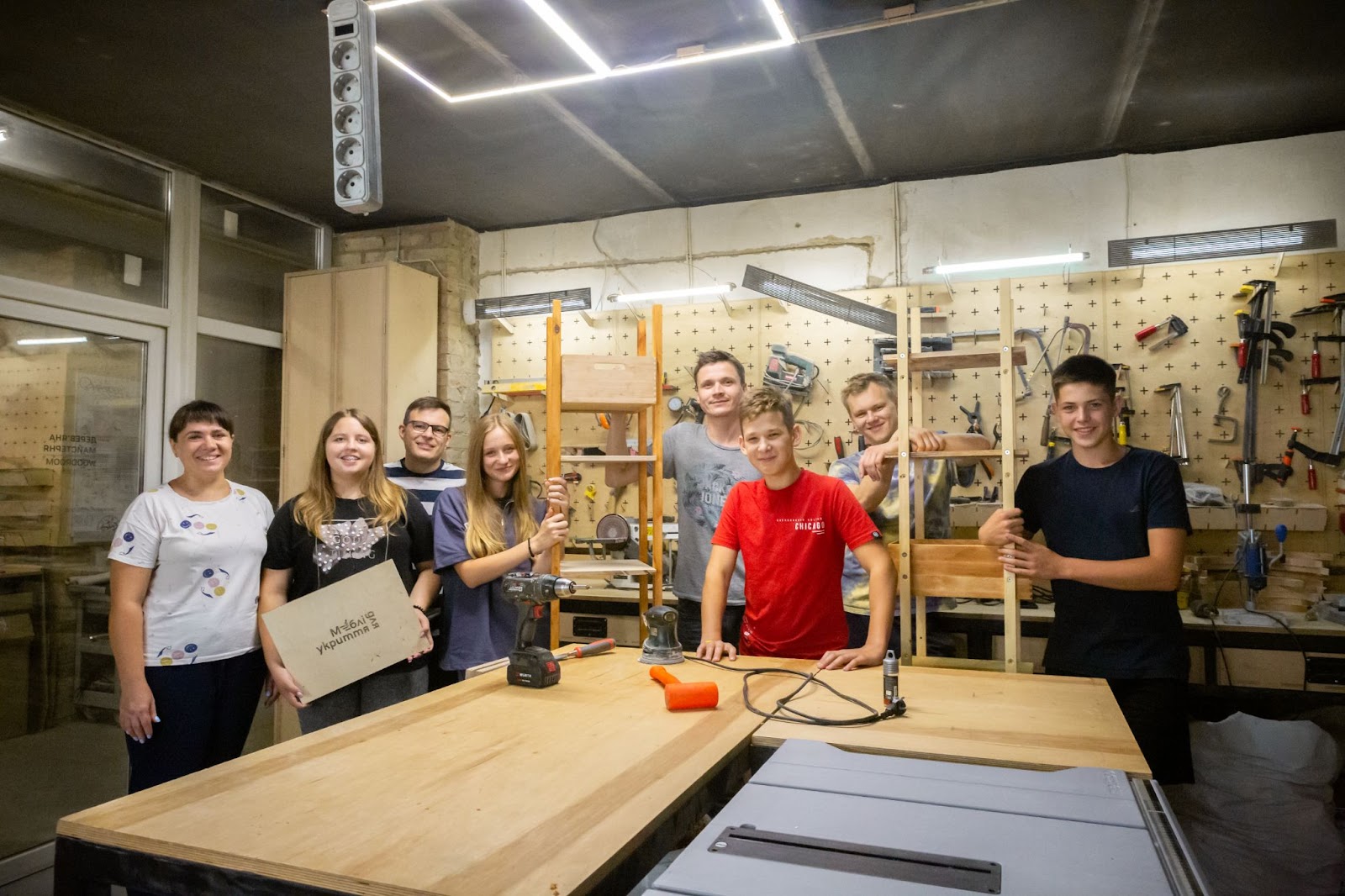
The team from Voznesensk with self-made racks for shelter.
"We also managed to find a model in which theory and practice, distance learning, and face-to-face learning are well balanced. We will finalize a few things, but we can already see what the program model we plan to scale will be," manager of the educational program for teenagers Plan.DIY, head of the NGO Pro.Pro.Lab.
Even more useful solutions!
In the future, the organization plans to develop two areas:
- developing new solutions for new problems that teams have not yet worked on.
- support of new communities in the application of already developed solutions.
According to Shulga, it is hardly necessary to motivate teenagers — she sees a huge request from teenagers to be helpful. It is better to support them in this desire, talking more about reconstruction and development of the places where they live, together exploring what could be improved. Start with something simple — analyze your experience to determine the problems the students themselves or their environment face.
For example, check whether the school is energy efficient and find simple ways to save energy or give yourself more freedom in arranging shelters. Thus, step by step, teenagers will grow confidence in their own abilities and thirst for more substantial changes.
Even now, children are ready to advise their peers on how to initiate changes in their communities. For example, Nadia Petlyakivska, a team leader from Rudky, offers the following action plan:
- Build your dream team. Gather students who want to create changeand will be interested in working together.
- Tell the teachers about your idea. Adults will be your support. They can spread information about the project among other adults — potential benefactors.
- Feel free to introduce yourself. When you have a solution to a problem and passionately believe in it, the idea will definitely find supporters.
- Don't be afraid of communication. Talking about the project in person is best—writing private messages, meeting, or calling. In the social media feed, people may simply not pay attention to your post, scroll through it, or not understand who you are and what you want to do.
- Tell your friends, acquaintances, relatives, authorities, and businesses about the project. You do it for yourself, the school, and the community. It might encourage people to donate.
[/background_substrate_simple]
You can follow the further implementation of the Plan.DIY program's projects on its Facebook or Instagram page.
The practical educational course on reconstruction for teenagers, Plan.DIY is implemented by the NGO Pro.Pro.Lab within the framework of the project Program to promote public activity 'Join!', financed by the United States Agency for International Development (USAID) and implemented by Pact in Ukraine. The course content is the sole responsibility of Pact and its partners. It does not necessarily reflect the views of the United States Agency for International Development (USAID) or the United States Government.
Newsletter
Digest of the most interesting news: just about the main thing



